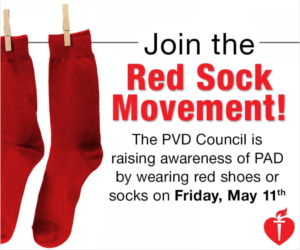Scientific knowledge is constantly evolving, and scientific meetings change over time to stay current with the target audience. Sometimes a revamp of the conference name is timely. For example, the American Society of Nephrology (ASN) retitled its annual Renal Week to Kidney Week in 2011 to move away from using nomenclature that might confuse the layperson (renal: late Latin adjective “relating to the kidneys”). This year, the AHA’s Arteriosclerosis, Thrombosis and Vascular Biology / Peripheral Vascular Disease (ATVB/PVD) meeting has been renamed Vascular Discovery and is happening in San Francisco May 10-12, 2018.
Thanks to the AHA Early Blogger program, I will be attending the ATVB conference for the first time, and will be live-tweeting for the Journal of the American Heart Association (JAHA). (Yes I still occasionally refer to the meeting as ATVB… not quite used to its snazzy new title yet!) I am totally stoked to be going to ATVB as vascular research has been a core interest of mine for several years, ever since fellowship training in the lab of Dr. Cecilia Giachelli at the University of Washington. Chronic kidney disease accelerates vascular disease at both the intimal and medial layers of arteries; i.e., atherosclerosis and medial vascular calcification. Medial vascular calcification is particularly intriguing as this is seen in the arteries of children on dialysis, without atherosclerosis (presumably because the children lack athero risk factors such as smoking, diabetes and aging). Dr. Giachelli identified a fascinating phenotype switch that occurs in the vascular smooth muscle cells of patients with chronic kidney disease; the cells start behaving like bone and deposit calcium-phosphate crystals in the artery wall, leading to vascular calcification and ultimately heart failure.
So, you may ask, why would a vascular cell decide to build bone in the wall of the blood vessel? This could be a defense mechanism, to avoid the cell imploding and dying. It turns out that too much intracellular calcium or phosphorus (an imbalance that can happen in chronic kidney disease) can trigger apoptosis (which also promotes vascular calcification!). By turning on genes that allow the cell to export calcium-phosphate mineral, the vascular cells avoid programmed cell death. Unfortunately, big picture-wise, this cell-centric ninja move fails the body as vascular calcification is associated with heart failure and sudden cardiac death. (Of note, Dr. Catherine Shanahan – one of the first to describe the role of apoptosis in uremic vascular calcification – will be a speaker at Vascular Discovery this week.)
ATVB is one of the smaller AHA conferences and thus the “concurrent sessions dilemma” is less of an issue. (Not like the AHA Scientific Sessions or ASN Kidney Week where one has to make a choice between 5-8 talks that are going on All At The Same Time.) The Vascular Discovery program this week includes sessions on precision medicine, diabetes-vascular complications, lipid metabolism, gut microbiome and inflammation. For vascular biology enthusiasts, this meeting is a must.
Follow #JAHAMeetingReport and #AHAEarlyCareerBlogger for live tweets from Vascular Discovery. And don’t forget to show your support for vascular disease awareness and research by wearing red socks on Friday!


Wei Ling Lau, MD is Assistant Professor in Nephrology at University of California-Irvine, where she studies vascular calcification and brain microbleeds in chronic kidney disease. She is currently funded by an AHA Innovative Research Grant, and has been a speaker for CardioRenal University and the American Society of Nephrology.